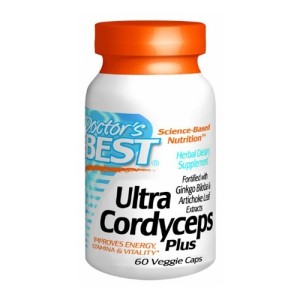Avocados, nuts, coconut and olive oil, grass fed meat and pasture raised eggs are my staples. As my study of nutrition and my own diet has progressed, I have found that ‘healthy fat’ sources are central to my meals I choose these foods because they make me feel full and satisfied without side effects of bloating or post meal fatigue.
An in-depth study into this inclusion of cholesterol and fat rich foods was prompted by yet another flare in the fat vs. statins debate. The American Heart Association (AHA) released their recent guidelines for cardiovascular disease prevention, centering on lowering cholesterol. The controversy: To target those who are high risk, the guidelines suggest statin therapy for a broader range of patients. Pharmaceutical interests are heavily represented in the panel of authors.

First, my disclaimer – I am not against statin therapy. I recognize the data which has emerged over the last 20 years of scientific study has shown efficacy of statin therapy in certain circumstances. These include secondary prevention of heart attack and stroke, and other cases of high risk primary prevention, such as familial hypercholesterolemia. I do, however, have disdain for the vilification of dietary fats. I believe that the biased correlation between cholesterol values with improved cardiovascular health has incorrectly led associations such as the AHA and USDA Center for Nutrition to recommend pro-inflammatory diets centered on carbohydrates. This puts people at risk of accelerated atherosclerosis, diabetes, cancer, dementia and autoimmune disease. Simply, cholesterol is not a proven surrogate of atherosclerosis. (1)
The danger of saturated fats is a concept not only believed by western medical practitioners, but is ingrained into our western society’s subconscious. Sitting precariously at the top of the food pyramid, just below junk food, are the protein sources that contain fats – fish, meat, cheese, nut butters. While candy and cookies get a place on the pyramid, oils do not. Very few people question where this concept came from, as it is now accepted as fact. In reality, a prominent researcher, Ancel Keys came up with a theory biased against saturated fats, in the 1950s . Despite objection against his single study results, he gained a spot on the American Heart Association’s advisory committee and developed the “diet-heart hypothesis” based on saturated fats in diet being the main contributor to heart disease. (1) There have been individuals who felt that blaming heart disease on saturated fat was premature and unwarranted, yet, the concept was embraced by the media, food companies switched to hydrogenated oils, and carbohydrates secured their spot as the foundation of our food pyramid.

Many will argue that despite a rocky initiation, the hypothesis has been proven by a multitude of studies showing the benefits of cholesterol lowering therapy in the 20th century. While these studies do exist (2, 3, 4) many were published before the current research regulations required investigators to publish both positive and negative results. More recent studies have failed to prove any benefit of statins or other cholesterol lowering agents on cardiovascular events or mortality despite their ability to decrease Low Density Lipoproteins (LDLs) and total Cholesterol (tC). (5-9)
We know that atherosclerosis and cardiovascular disease have a multifactorial disease process, within which inflammation plays a central role. Perhaps the way in which statins have shown to confer benefit in some studies is through the modulation of the inflammatory disease process. It has been documented that statins reduce C-Reactive Protein (CRP) a known inflammatory marker (10, 11). Further it is has been documented that statins have blood thinning properties that would likely be beneficial in the setting of narrowed vessels.(1)

It is important to learn about dietary fats so that we can make educated decisions about our nutrition. Fats play critical roles in our bodily activities. Fats insulate the cells of our nervous system and our brains; are an important component of our sex and steroid hormones and immune cells; phospholipids are the major component for each and every cell membrane in our bodies and fats provide a clean energy source.
There are many types of fats, some with more beneficial roles than others. For a simplified summary:
Saturated Fats – found in animal products, such as meat, eggs and butter, as well as coconut oil, have now been shown to have a beneficial role in our health. (12-15) they are stable and do not oxidize when exposed to oxygen (as polyunsaturated fats do), they also produce more energy when burned as fuel as they take less energy to break their bonds than the unsaturated fatty acids.(1)
Polyunsaturated fats (PUFAs) –unstable and easily oxidized, these fats have important roles in our body. PUFAs have been  popularized as they include the omega 3s and 6s. These fats are essential for our cell membranes and hormonal and immune system functioning and they are abundant in our brain. The end product of omega-6 metabolism is pro-inflammatory while omega-3 is anti-inflammatory. The optimal balance of omega 3:6 would be 1:1 of 1:4 however in a typical western diet we are consuming a pro-inflammatory balance of 1:16. (1) Linoleic acid, a specific omega-6 essential fatty acid, has been reported with inverse risk of cardiovascular events (16)
popularized as they include the omega 3s and 6s. These fats are essential for our cell membranes and hormonal and immune system functioning and they are abundant in our brain. The end product of omega-6 metabolism is pro-inflammatory while omega-3 is anti-inflammatory. The optimal balance of omega 3:6 would be 1:1 of 1:4 however in a typical western diet we are consuming a pro-inflammatory balance of 1:16. (1) Linoleic acid, a specific omega-6 essential fatty acid, has been reported with inverse risk of cardiovascular events (16)
Monounsaturated fats – such as omega-9 found in olive oil is very resistant to oxidization. A Spanish study supplementing 4 tablespoons of olive oil daily v placebo showed a reduction in major cardiovascular events after a 5-years follow up. (13) A recent American study showed an inverse association between nut consumption with mortality after 30 years follow-up.(15)
Trans-unsaturated fats – found in hydrogenated oils used in fast food restaurants and margarines. Numerous meta-analyses and studies of dietary fats have pointed at trans-unsaturated as directly associated with risk of cardiovascular outcomes (16).
Multiple studies, including meta-analyses from the Netherlands in 2011 and in the Annals of Internal Medicine published in March of 2014, are showing that the intake of dietary saturated fats do not correlate with increased cardiovascular events. In fact, the latter study concludes “Current evidence does not clearly support cardiovascular guidelines that encourage high consumption of polyunsaturated fatty acids and low consumption of total saturated fats.” (16)
In conclusion, the link between dietary fats and cardiovascular risk is weak. In fact, fats can be beneficial to our health, promote brain and immune health and help us maintain optimal body weight by helping us burn efficient fuel while feeling satiated. It is important to note that environmental toxins, such as pesticides, are stored in animal fats and to eat animal products such as butters, cheeses and meat will put one at risk of ingesting and storing these toxins in adipose tissue. This is why organic grass fed meat and pasture raised chickens and eggs are optimal.
In my own practice I will continue to prescribe statins for secondary prevention but the most important intervention I can make is to educate my patients regarding healthy eating practices which include a largely plant based diet low in processed foods and simple carbohydrates.
References:
1. Sinatra, S et al. The Saturated Fat, Cholesterol, and Statin Controversy: A Commentary. Journal of the American College of Nutrition. 2014; 33:1.
2. Khush KK, et al. Lessons from the PROVE-IT trial. Higher dose of potent statin better for high risk patients. Cleveland Clinical Journal of Medicine. 2004; 71.
3. Schwartz GG, et al. Effects of atorvastatin on early reccurent ischemic events in acute coronary syndromes: the MIRACL study: a randomized controlled trial. Journal of American Medical Association. 2001; 285.
4. Cannon, CB, et al. Intensive versus moderate lipid-lowering with statins after acute coronary syndromes. New England Journal of Medicine. 2004; 350.
5. Rodriguez, Luis. The ENHANCE Trial: Analysis and Clinical Significance. Clinical Lipidology. 2010;5(2):161-166.
6. Rossebø, AB et al. Intensive Lipid Lowering with Simvastatin and Ezetimibe in Aortic Stenosis. New England Journal of Medicine. 2008; 359:1343-1356
7. Tavazzi, L et al. Effect of rosuvastatin in patients with chronic heart failure (the GISSI-HF trial): a randomised, double-blind, placebo-controlled trial. Lancet. 2008 Oct 4;372(9645):1231-9.
8. Gruberg, Luis, et al. PREVEND IT: Prevention of Renal and Vascular Endstage Disease Intervention Trial. Clinical Cardiology. 2004:27.
9. Barter, PJ. Effects of Torcetrapib in Patients at High Risk for Coronary Events. New England Journal of Medicine. 2007; 357:2109-2122
10. Ridker, PM et al. JUPITER study group: Rosuvastatin to prevent vascular events in men and women with elevated C-reactive protein. New England Journal of Medicine. 2008; 359.
11. Lorgeril, M. Disappointing Recent Cholesterol-Lowering Drug Trials: Is it not time for a full reappraisal of the Cholesterol Theory? World Review of Nutrition and Dietics. 2009;100
12. Kuipers RS et al. Saturated fat, carbohydrates and cardiovascular disease. Netherlands Journal of Medicine. 2011 Sep;69(9):372-8.
13. Estruch, R et al. Primary prevention of cardiovascular disease with Mediterranean diet. New England Journal of Medicine. 2013; 268.
14. Jordi Mayneris-Perxachs, et al. Effects of 1-year intervention with a mediterranean diet on plasma Fatty Acid composition and metabolic syndrome in a population at high cardiovascular risk. PLOS one, online publication. 2014. http://www.ncbi.nlm.nih.gov/pmc/articles/PMC3961210/pdf/pone.0085202.pdf
15. Bao, Y. Association of nut consumption with total and cause-specific mortality. New England Journal of Medicine. 2013; 369.
16. Aschercio etc al. Dietary fat and risk of coronary heart disease in men: cohort follow up study in the United States. British Medical Journal. 1996; 313:84.
Additional Reading for Nutrition Enthusiasts:
Real Food: What to Eat and Why by Nina Plank
In Defense of Food: An Eaters Manifesto by Micahel Pollan
Grain Brain by Dr. David Perlmutter
Anticancer: A new way of life by Dr. David Servan-Schreiber

 I’ve been gathering and synthesizing research to put out a series of posts on environmental toxins that are commonly found in our homes and personal products (think shampoo, soap and makeup!), but for now I wanted to share a few articles that I’ve come across supporting a previous post on the benefits of healthy fats in your diet, and how to incorporate these healthy fats into your life.
I’ve been gathering and synthesizing research to put out a series of posts on environmental toxins that are commonly found in our homes and personal products (think shampoo, soap and makeup!), but for now I wanted to share a few articles that I’ve come across supporting a previous post on the benefits of healthy fats in your diet, and how to incorporate these healthy fats into your life.














